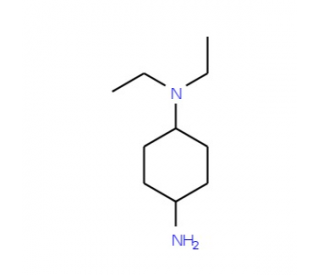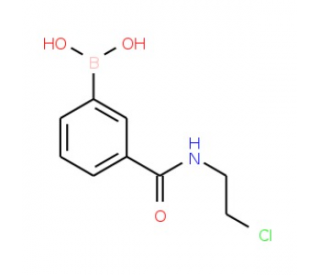详细说明
Species Reactivity
Human
Specificity
Detects human ST-2/IL-33R in direct ELISAs.
Source
Monoclonal Rabbit IgG Clone # 2154B
Purification
Protein A or G purified from hybridoma culture supernatant
Immunogen
S. frugiperda insect ovarian cell line Sf 21-derived recombinant human ST-2/ IL-33R
Lys19-Phe328
Accession # Q01638Formulation
Lyophilized from a 0.2 μm filtered solution in PBS with Trehalose. *Small pack size (SP) is supplied as a 0.2 µm filtered solution in PBS.
Label
Unconjugated
Applications
Recommended
ConcentrationSample
Flow Cytometry
0.25 µg/10 6 cells
See below
Please Note: Optimal dilutions should be determined by each laboratory for each application. are available in the Technical Information section on our website.
Data Examples
Flow Cytometry | Detection of ST2/IL-33 R in HEK293 Human Cell Line Transfected with Human ST2/IL-33 R and eGFP by Flow Cytometry. HEK293 human embryonic kidney cell line transfected with either (A) human ST2/IL-33 R or (B) irrelevant transfectants and eGFP was stained with Rabbit Anti-Human ST2/IL-33 R Monoclonal Antibody (Catalog # MAB5232) followed by Allophycocyanin-conjugated Anti-Rabbit IgG Secondary Antibody (Catalog # ).Quadrant markers were set based on control antibody staining (Catalog # ). View our protocol for . |
Preparation and Storage
Reconstitution
Reconstitute at 0.5 mg/mL in sterile PBS.
Shipping
The product is shipped at ambient temperature. Upon receipt, store it immediately at the temperature recommended below. *Small pack size (SP) is shipped with polar packs. Upon receipt, store it immediately at -20 to -70 °C
Stability & Storage
Use a manual defrost freezer and avoid repeated freeze-thaw cycles.
12 months from date of receipt, -20 to -70 °C as supplied.
1 month, 2 to 8 °C under sterile conditions after reconstitution.
6 months, -20 to -70 °C under sterile conditions after reconstitution.
Background: ST2/IL-33 R
ST2, also known as IL-1 R4 and T1, is an Interleukin-1 receptor family glycoprotein that contributes to Th2 immune responses (1, 2). Human ST2 consists of a 310 amino acid (aa) extracellular domain (ECD) with three Ig-like domains, a 21 aa transmembrane segment, and a 207 aa cytoplasmic domain with an intracellular TIR domain (3, 4). Alternate splicing of the 120 kDa human ST2 generates a soluble 60 kDa isoform that lacks the transmembrane and cytoplasmic regions as well as an isoform that additionally lacks the third Ig‑like domain (4). Within the ECD, human ST2 shares 68% and 64% aa sequence identity with mouse and rat ST2, respectively. ST2 is expressed on the surface of mast cells, activated Th2 cells, macrophages, and cardiac myocytes (5‑8). It binds IL-33, a cytokine that is upregulated by inflammation or mechanical strain in smooth muscle cells, airway epithelia, keratinocytes, and cardiac fibroblasts (5, 9). IL-33 binding induces the association of ST2 with IL-1R AcP, a shared signaling subunit that also associates with IL-1 RI and IL-1 R rp2 (1, 10, 11). In macrophages, ST2 interferes with signaling from IL-1 RI and TLR4 by sequestering the adaptor proteins MyD88 and Mal (7). In addition to its role in promoting mast cell and Th2 dependent inflammation, ST2 activation enhances antigen induced hypernociception and protects from atherosclerosis and cardiac hypertrophy (5, 12‑14). The soluble ST2 isoform is released by activated Th2 cells and strained cardiac myocytes and is elevated in the serum in allergic asthma (6, 8, 15). Soluble ST2 functions as a decoy receptor that blocks the ability of IL‑33 to signal through transmembrane ST2 (10, 13‑15).
References:
Barksby, H.E. et al. (2007) Clin. Exp. Immunol. 149:217.
Gadina, M. and C.A. Jefferies (2007) Science STKE 2007:pe31.
Tominaga, S. et al. (1992) Biochim. Biophys. Acta 1171:215.
Li, H. et al. (2000) Genomics 67:284.
Schmitz, J. et al. (2005) Immunity 23:479.
Lecart, S. et al. (2002) Eur. J. Immunol. 32:2979.
Brint, E.K. et al. (2004) Nat. Immunol. 5:373.
Weinberg, E.O. et al. (2002) Circulation 106:2961.
Sanada S. et al. (2007) J. Clin. Invest. 117:1538.
Palmer, G. et al. (2008) Cytokine 42:358.
Chackerian, A.A. et al. (2007) J. Immunol. 179:2551.
Allakhverdi, Z. et al. (2007) J. Immunol. 179:2051.
Verri Jr., W.A. et al. (2008) Proc. Natl. Acad. Sci. 105:2723.
Miller, A.M. et al. (2008) J. Exp. Med. 205:339.
Hayakawa, H. et al. (2007) J. Biol. Chem. 282:26369.
Long Name:
Interleukin 33 Receptor
Entrez Gene IDs:
9173 (Human); 17082 (Mouse)
Alternate Names:
DER4; Fit-1; IL-1 R4; IL1R4; IL-1R4; IL-1RL1; IL-33R; Ly84; ST2; ST2L; ST2V; suppression of tumorigenicity 2; T1











 粤公网安备44196802000105号
粤公网安备44196802000105号